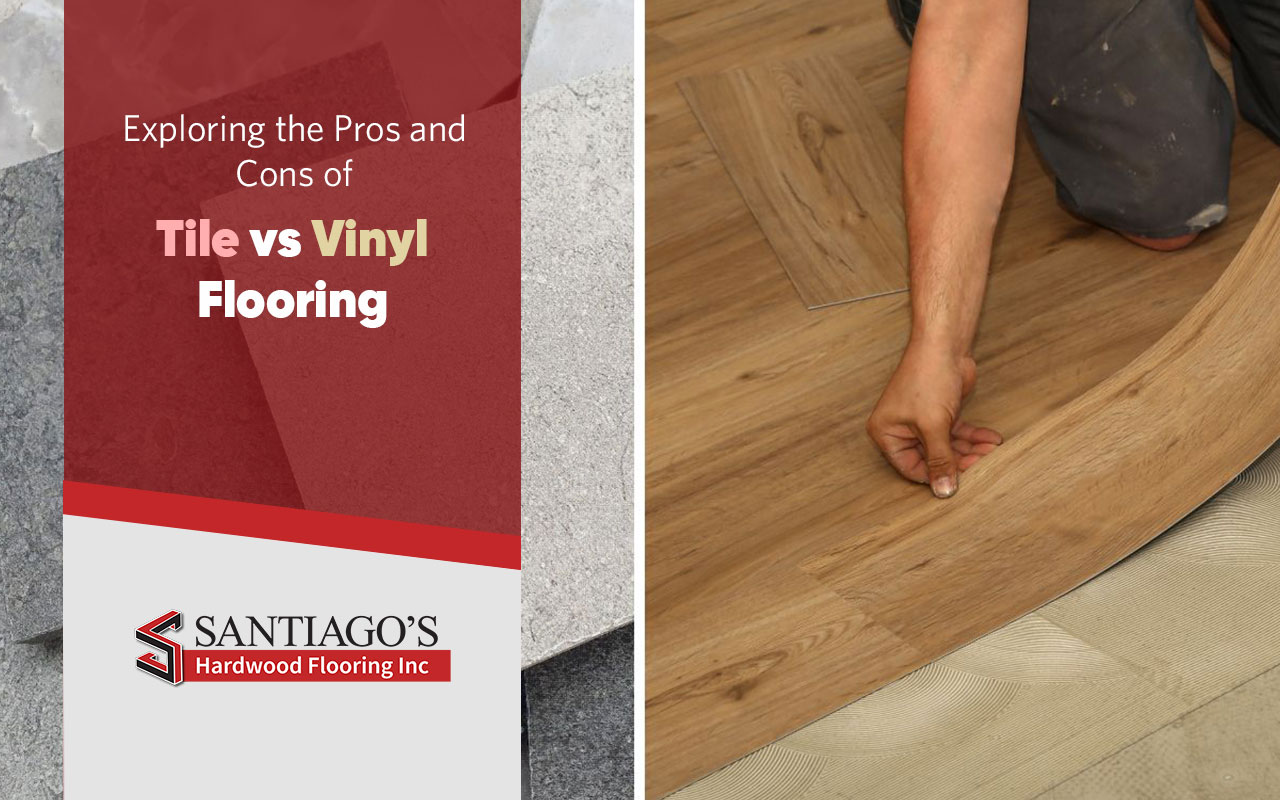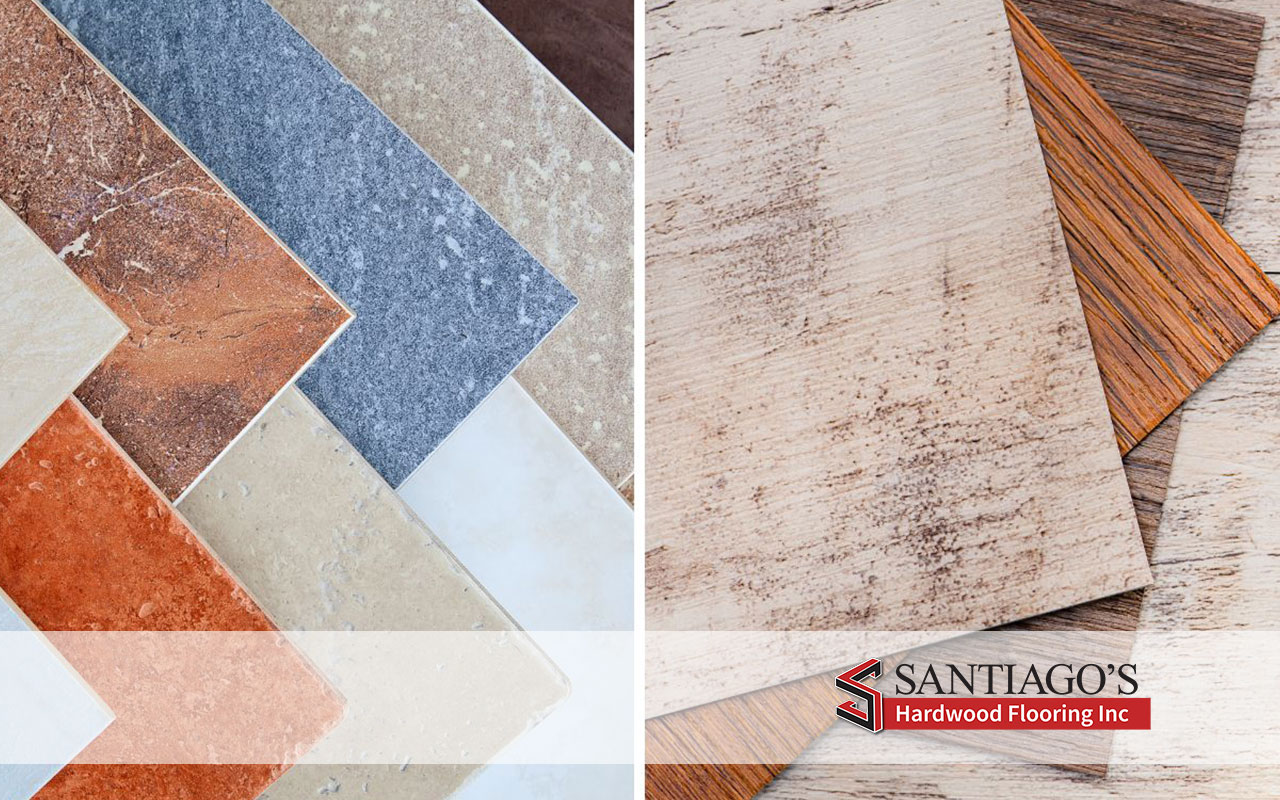
Selecting the right flooring for your home or office often involves comparing tile vs vinyl flooring. Each material offers unique advantages and challenges crucial for design and functionality. Exploring these options?
Let’s dive into a detailed comparison! Our blog is perfect for anyone interested in this topic and aims to simplify your selection process. Whether planning a renovation or starting a new project, here you’ll find the essential information to help you choose the best flooring option.
Detailed Comparison: Tile vs Vinyl Flooring
When embarking on a home renovation or new construction project, one of the pivotal decisions involves selecting the right flooring. The debate between tile and vinyl flooring is crucial, as each offers unique attributes and potential drawbacks.
Both materials have evolved over the years, offering a range of styles, textures, and colors. This section will compare tile and vinyl flooring, emphasizing installation ease, long-term durability, comfort underfoot, and overall cost implications. Understanding these elements is essential for anyone looking to make a choice that not only enhances the aesthetic of their space but also ensures practicality and longevity.
Tile vs Vinyl Flooring
Durability and Longevity
Tile Flooring: Known for its robustness, tile flooring can withstand heavy traffic and is resistant to moisture and stains. Tiles made from ceramic or porcelain are long-lasting, often maintaining their appearance for decades. However, they can crack under extreme force.
Vinyl Flooring: Vinyl is less prone to cracking but can suffer from scratches and dents over time. Its resilience makes it a popular choice in areas with high foot traffic. Modern vinyl flooring is also designed to resist fading and staining, contributing to longevity.
Aesthetic and Style Options
Tile Flooring: The aesthetic range of tile flooring is vast, offering options from classic ceramic to luxury porcelain styles. Tiles can mimic natural stone or wood, providing a high-end look.
Vinyl Flooring: Vinyl flooring has significantly improved in mimicking the look of wood, stone, and even tile. The printing technology allows for a wide array of designs, textures, and colors, making it a versatile option for various decor themes.
Installation and Maintenance
Tile Flooring: Installation of tile flooring can be labor-intensive and requires precision. Its maintenance includes regular cleaning and occasional sealing, especially for natural stone tiles.
Vinyl Flooring: Vinyl is comparatively easier to install, often in planks or tiles with click-lock installation. Maintenance is straightforward, requiring regular sweeping and mopping without sealing.
Comfort and Insulation
Tile Flooring: Tiles can feel cold underfoot, especially in cooler climates, and may require underfloor heating for added comfort. They offer minimal sound insulation.
Vinyl Flooring: Vinyl provides a softer and warmer surface underfoot. It is also better at sound absorption, making it a quieter flooring option.
Cost Comparison
Tile Flooring: Tile flooring costs vary widely based on the material. Porcelain tiles tend to be more expensive than ceramic. The installation cost is also higher due to the labor involved.
Vinyl Flooring: Vinyl flooring is generally more budget-friendly, both in terms of material and installation costs. It offers a cost-effective solution for those seeking a durable and stylish flooring option.
Environmental Impact
Tile Flooring: Ceramic and porcelain tiles are made from natural materials, making them a more eco-friendly option. They also contribute to indoor air quality as they do not emit VOCs (Volatile Organic Compounds).
Vinyl Flooring: While improving, vinyl flooring historically has been less eco-friendly due to its PVC composition. However, many manufacturers are now offering recycled and low-VOC options.
Suitability for Various Spaces
Tile Flooring: Ideal for bathrooms, kitchens, and high-moisture areas due to its water resistance.
Vinyl Flooring: Highly versatile, suitable for living rooms, bedrooms, and areas where comfort underfoot is a priority.
Practical Insights: Tile vs Vinyl Flooring

Tips for Choosing Between Tile and Vinyl Flooring
Consider Lifestyle Needs: Vinyl flooring’s resilience and easy maintenance might be more appealing for busy households with pets or children. Tile flooring, on the other hand, is ideal for areas prone to moisture.
Budget Constraints: If cost is a significant factor, vinyl offers an affordable yet stylish option. Tiles, especially high-end porcelain, can be more of an investment.
Aesthetic Preferences: Tiles provide a classic, timeless look, especially in kitchens and bathrooms, while vinyl flooring offers greater versatility in design, imitating various textures and styles.
Common Questions Answered
Is vinyl flooring waterproof?
Yes, most vinyl flooring is waterproof, making it suitable for kitchens and bathrooms.
Can tile flooring increase home value?
Yes, exceptionally high-quality porcelain or stone tiles can add value to your property due to their durability and aesthetic appeal.
Expert Flooring Solutions by Santiago’s Hardwood Flooring Inc.
Santiago’s Hardwood Flooring Inc. offers more than flooring solutions; we invest in your home’s comfort and value. Our professional team guarantees a seamless installation and a flawless finish, blending style, and durability.
Choose between the classic elegance of tile or the versatile beauty of vinyl, and let our unwavering commitment to quality and customer satisfaction guide you. Experience the Santiago difference—where your vision becomes our craftsmanship.
